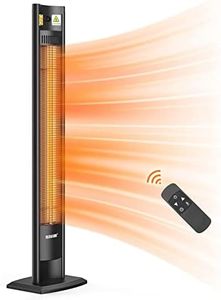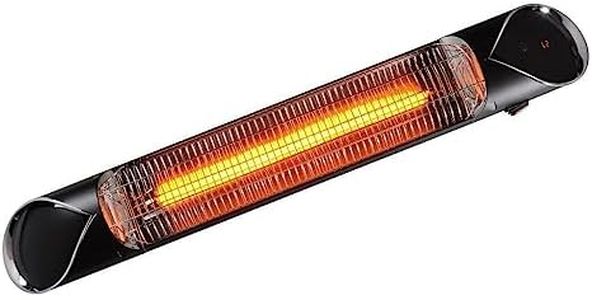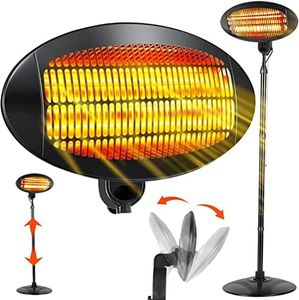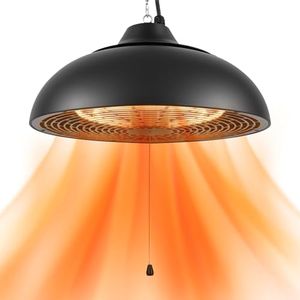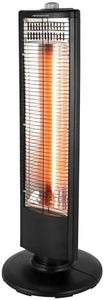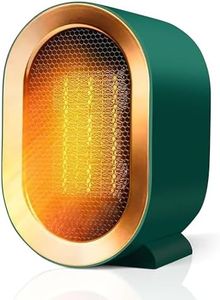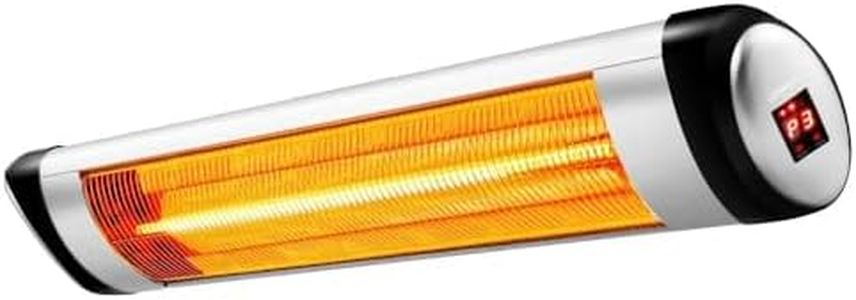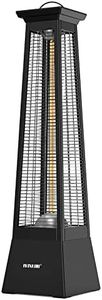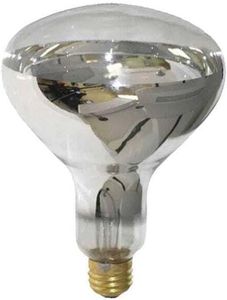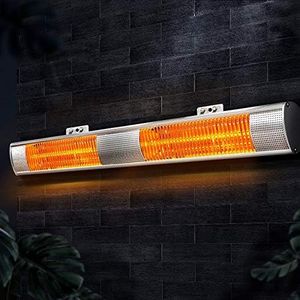We Use CookiesWe use cookies to enhance the security, performance,
functionality and for analytical and promotional activities. By continuing to browse this site you
are agreeing to our privacy policy
10 Best Infrared Heaters
From leading brands and best sellers available on the web.Buying Guide for the Best Infrared Heaters
Choosing the right infrared heater can make a big difference in your comfort and energy efficiency during colder months. Infrared heaters work by emitting infrared rays that directly warm up people and objects in their path, rather than just heating the air. This makes them a popular choice for spot heating or for rooms that are not well insulated. Before buying, think about where you want to use the heater, how large the space is, and how much portability or control you need. By understanding the key features, you can pick a model that keeps you cozy and fits your needs.Heating Power (Wattage)Heating power, usually measured in watts, tells you how much heat the infrared heater can generate. This spec is important because it directly affects how large an area the heater can warm. Low wattage heaters (around 300-600W) are good for small areas or for personal use, such as under a desk. Medium wattage ranges (800-1500W) work well for typical bedrooms or offices. Higher wattage heaters (over 1500W) are better for larger spaces like living rooms or garages. To pick the right one, consider the size and insulation of your space: smaller, well-insulated rooms need less power, while big or drafty rooms require more.
Type (Portable, Wall-Mounted, Panel, Patio)The type of infrared heater points to its design and intended use. Portable heaters are great for moving between rooms, providing flexibility. Wall-mounted units save space and deliver consistent heating in a fixed area. Panel heaters are slim and fit neatly onto walls or ceilings, blending with the decor. Patio heaters are built for outdoor use, capable of withstanding weather, and provide warmth in open areas. Choose a type that suits where you plan to use the heater; if you need mobility, go portable. For a permanent solution in a specific spot, wall-mounted or panel models are better. For outdoor gatherings, patio heaters are ideal.
Safety FeaturesSafety features on an infrared heater are designed to prevent accidents, such as overheating or tipping over. Look for features like automatic shut-off, tip-over protection, and cool-touch exteriors. These are particularly important if you have children or pets, or if the heater will be left running unattended. If safety is a concern in your home, prioritize models with multiple safety certifications and built-in preventions against common heating accidents.
Controls and ThermostatControls and thermostat options determine how you adjust and maintain the temperature. Some heaters have simple manual dials, while others offer digital displays, remote controls, or even programmable timers. A built-in thermostat helps maintain a steady temperature and improves energy efficiency by turning the heat on and off automatically. If you like precise control or want to set schedules, choose a heater with advanced controls. For simple, occasional use, basic models may be enough.
Size and PortabilityThe size and portability of an infrared heater affect how easily you can move and position it. Compact designs are easy to carry from room to room or store away when not in use. Larger units might provide more heat but can be bulky. If you move the heater often, look for lightweight models with carrying handles or wheels. If it will stay in one place, size matters less, so focus more on heating power and coverage.
Noise LevelNoise level is important if you use the heater in quiet spaces like bedrooms or offices. Most infrared heaters are relatively quiet because they don’t use fans, but some models can produce sounds from internal parts or controls. If silence is important, check for user reviews or look for models specifically described as silent or whisper-quiet.
